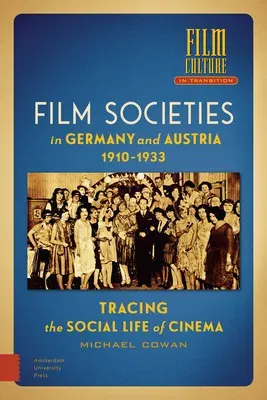Michael Cowan
(Author)Film Societies in Germany and Austria 1910-1933: Tracing the Social Life of CinemaHardcover, 7 March 2023

Qty
1
Turbo
Ships in 2 - 3 days
Only 1 left
Free Delivery
Cash on Delivery
15 Days
Free Returns
Secure Checkout

Part of Series
Film Culture in Transition
Print Length
274 pages
Language
English
Publisher
Amsterdam University Press
Date Published
7 Mar 2023
ISBN-10
9463725474
ISBN-13
9789463725477
Description
Product Details
Author:
Book Format:
Hardcover
Country of Origin:
US
Date Published:
7 March 2023
Genre:
Germany
ISBN-10:
9463725474
ISBN-13:
9789463725477
Language:
English
Location:
Amsterdam
Pages:
274
Publisher:
Series: